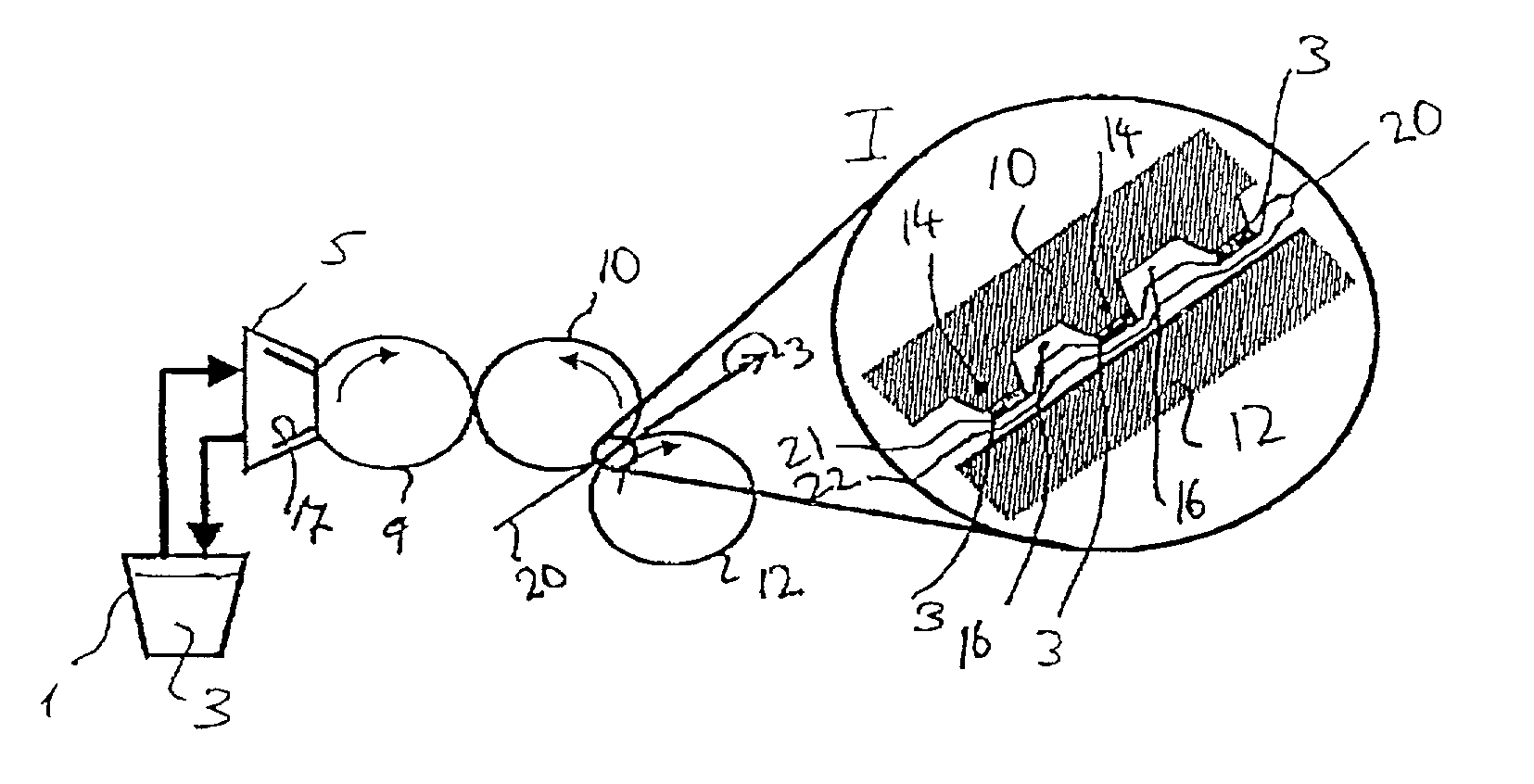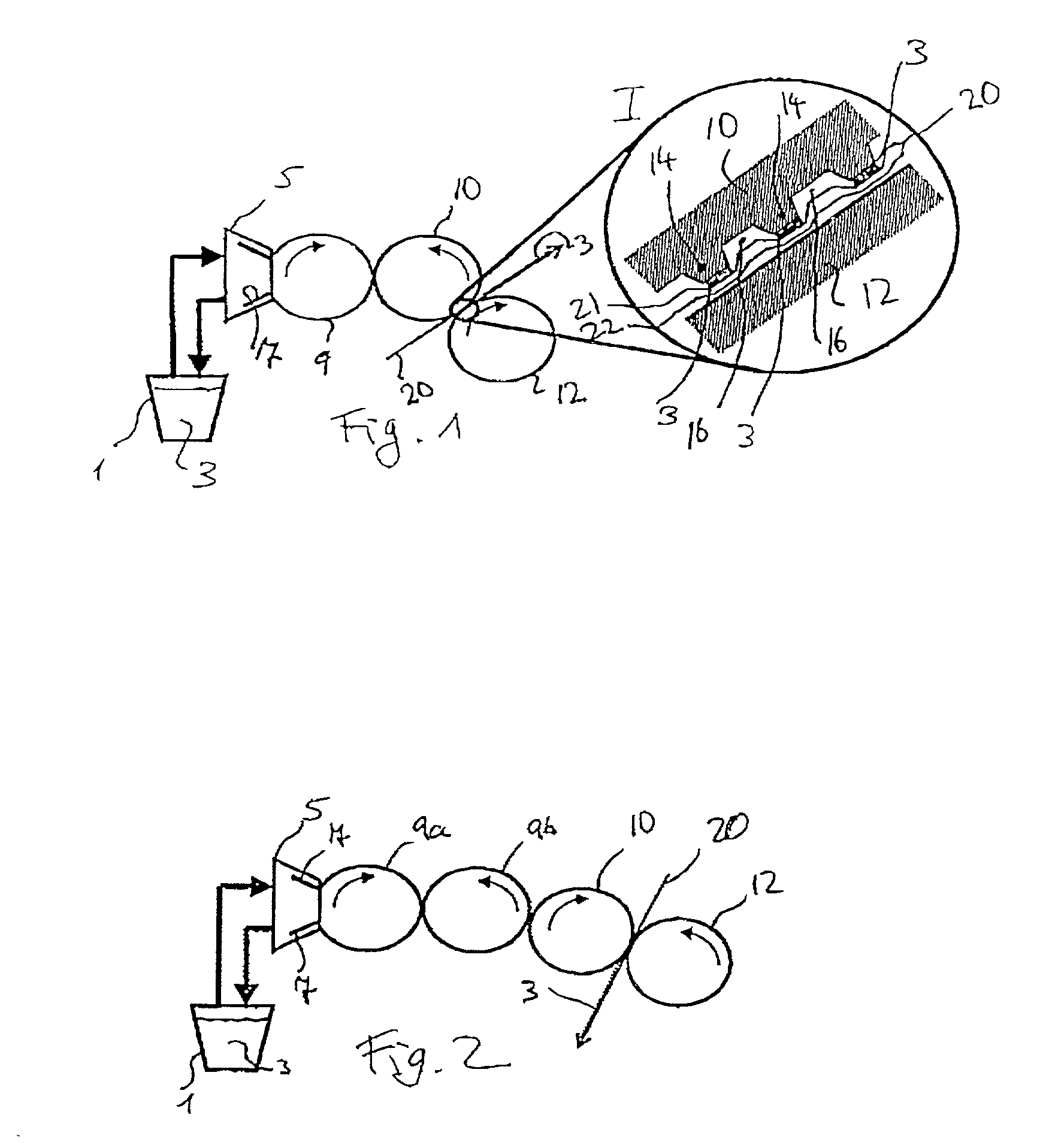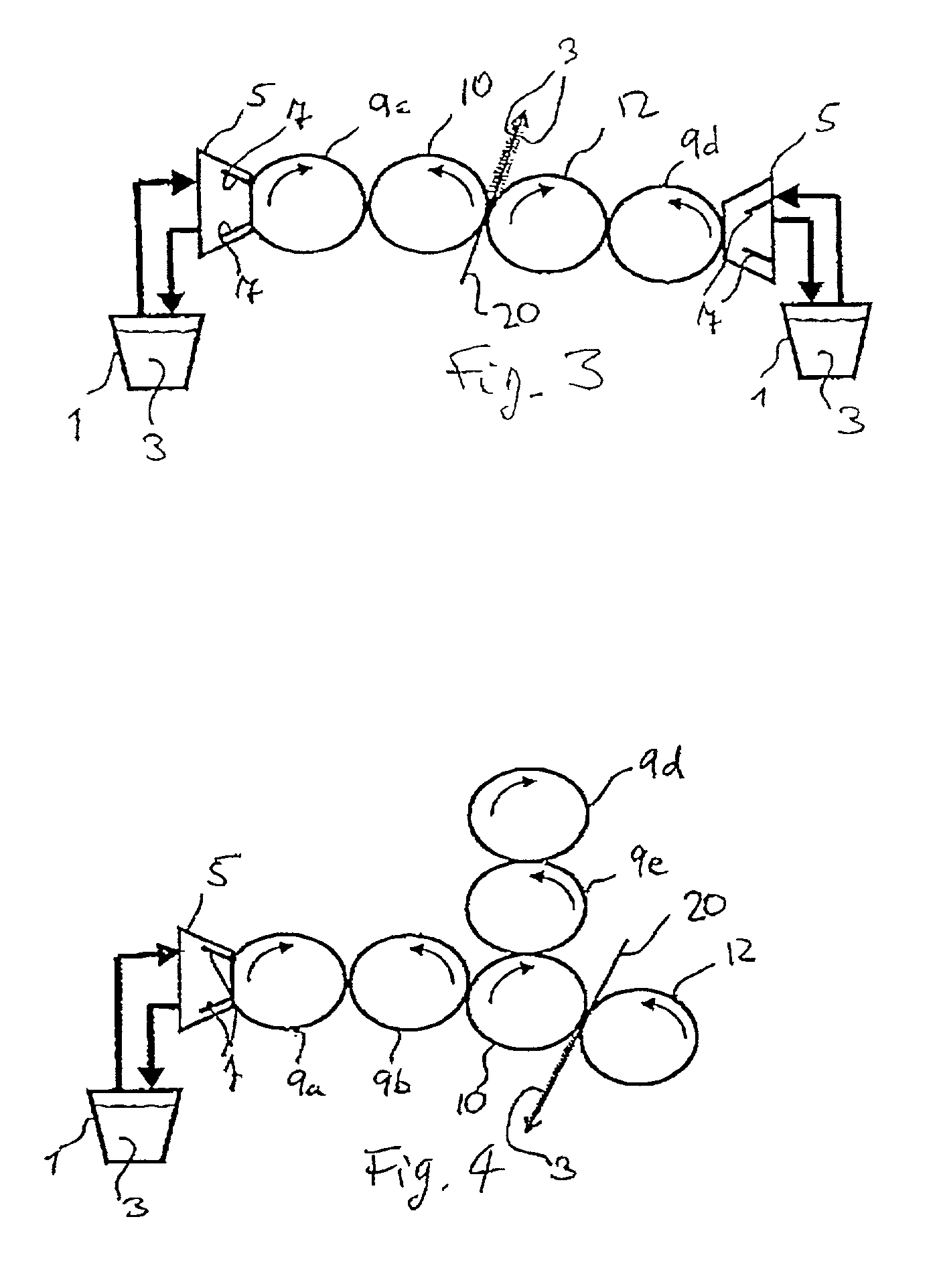Method of and apparatus for producing a printed ink pattern on a tissue product, as well as a printed tissue product as such
a tissue product and printing technology, applied in the field of printing ink pattern on tissue products, can solve the problems of pattern printing on external surfaces of products, not always desirable, impression of being faded,
- Summary
- Abstract
- Description
- Claims
- Application Information
AI Technical Summary
Benefits of technology
Problems solved by technology
Method used
Image
Examples
Embodiment Construction
[0018] The apparatus, method and product in accordance with the present invention will now be further described, initially by way of reference to FIG. 1.
[0019] In FIG. 1, reference numeral 1 denotes an ink reservoir, holding a sufficient supply of typically liquid ink 3. The ink reservoir 1 is connected by way of suitable conduits for the ink to an inking chamber 5. The inking chamber 5, in turn, comprises one or more doctor blades 7. in combination, the ink reservoir 1, the inking chamber 5 and the doctor blades 7 supply an ink transfer roll 9 with the desired amount of ink, and thus form a supply system or a supply unit for the next adjacent element. Such an ink supplying system is generally referred to as a chamber doctor blade system (in German: Kammerrakelsystem). Typically, the ink is applied to the entire surface area of the ink transfer roll 9, and the desired amount of the applied ink is adjusted by a first doctor blade, a second doctor blade being provided to remove unused...
PUM
| Property | Measurement | Unit |
|---|---|---|
| adhesive | aaaaa | aaaaa |
| surface structure | aaaaa | aaaaa |
| non-elastic | aaaaa | aaaaa |
Abstract
Description
Claims
Application Information
 Login to View More
Login to View More - R&D
- Intellectual Property
- Life Sciences
- Materials
- Tech Scout
- Unparalleled Data Quality
- Higher Quality Content
- 60% Fewer Hallucinations
Browse by: Latest US Patents, China's latest patents, Technical Efficacy Thesaurus, Application Domain, Technology Topic, Popular Technical Reports.
© 2025 PatSnap. All rights reserved.Legal|Privacy policy|Modern Slavery Act Transparency Statement|Sitemap|About US| Contact US: help@patsnap.com



